
Over a month has passed since the United States went into lockdown as a result of COVID-19. The impact it’s had on our personal and professional lives has been massive. And it’s forced every business to face some big questions on how they’ll react to this moment.
It’s been inspiring to see businesses of all sizes step up in creative ways to contribute with everything from money, to goods, to manufacturing resources.
For the organizations with the most resources, the Fortune 100, it offers up a unique test of their brand’s values and their ability to communicate in the face of a crisis. Are they showing leadership at a time when there’s so much need? Are they engaged and nimble enough to act quickly?
With a month of time, thousands of employees, and billions in revenue these companies should in theory have plenty of options around what they can do and say.
And at a time like this, their position helps set an example for other businesses who are also grappling with the same question:
How should brands communicate during a crisis like this?
Last month, we looked at how brands communicated via email during the first week of the crisis. It was a great snapshot into the immediate reactions from a wide range of companies.
Now that a little time has passed, we wanted to see how the messaging of the biggest players has evolved. What consistent message are they putting out?
And again, what can other brands learn from these examples?
We did a review of all the Fortune 100 brands to see how they’re reacting and the impression it might leave on customers.
Our Fortune 100 COVID-19 Brand Messaging Analysis
The effectiveness of a brand centers around the value it provides and its ability to communicate that value clearly to customers.
For this analysis, we didn’t try to tease out all the actions or contributions for these brands. There are other sources to track things like donations.
Instead, we wanted to look at their messaging at face value. Are they clear about what their response has been to COVID-19?
And because the brands in the Fortune 100 cover so many different industries and business models, we wanted to look at an asset they all have in common — their website.
Specifically, we looked at their homepage. This is often the first impression of a brand, particularly if someone is seeking out a response in a crisis.
For the study, we created a scale of 0-3 to grade each brand’s homepage messaging around COVID-19:
0: No messaging or references to the COVID-19 crisis on the homepage — i.e. “business as normal”
1: Simple notification of an announcement (e.g. a bar at the top of the page), otherwise homepage has no mention of the crisis
2: Messaging directly on the homepage that speaks to actions that the brand has taken, empathetic messages related to the crisis, or some combination of both
3: Direct messaging and in-depth content updates on the homepage around services and resources the brand offers related to the crisis
Breakdown Of All Fortune 100 Brands
Total Brands Included:
100
Verticals / Industries:
30
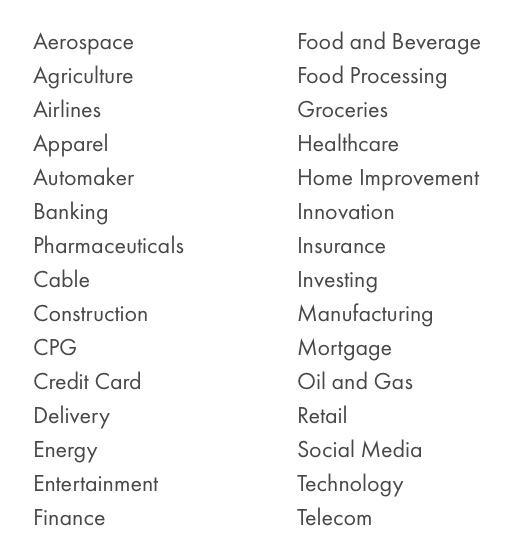
Average Rating Across All 100 Brands:
1.75
Overall, this rating puts the average above a simple notification, but below some sort of specific messaging around action taken or an empathetic message.
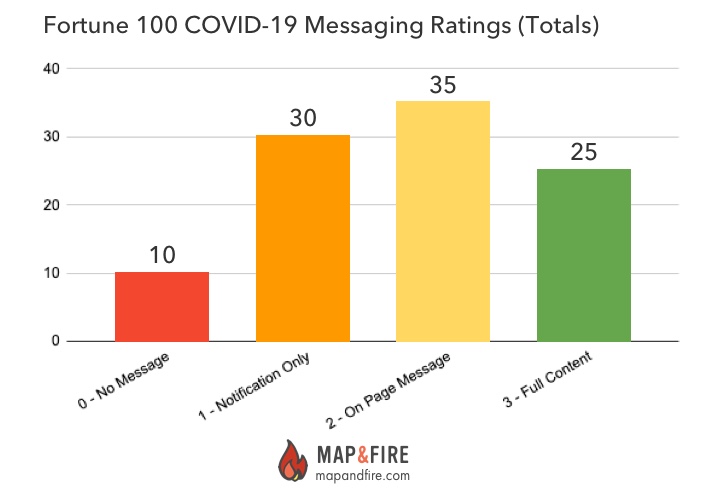
As we see here, the most common messaging type is a dedicated message directly on the homepage.
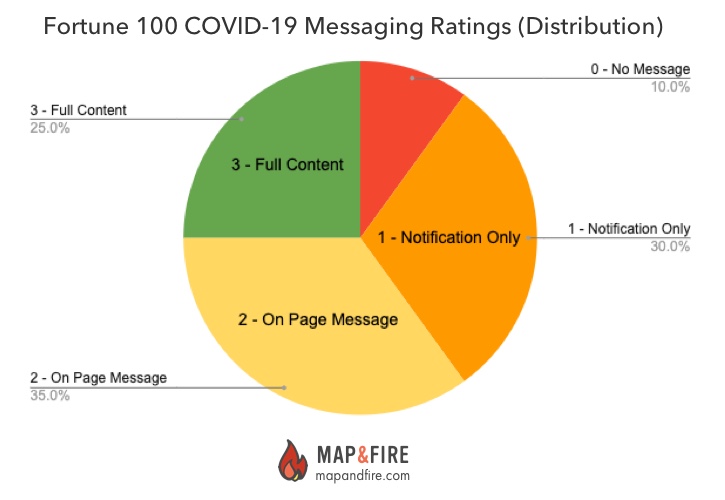
In terms of distribution, 60% opted for dedicated messaging or full content updates.
The other 40% took a minimal route.
Let’s look at each rating to see what we can learn from each approach.
0-Rating: No Message
Whether a brand’s website is geared towards high level corporate information or individual customers, it’s hard to argue a case for a Fortune 100 organization to say nothing at a time like this.
Even though a generic corporate announcement might not feel like much, it at least acknowledges that the company is paying attention.
When nothing is said, it gives the impression that either:
- The company is disconnected
- The company isn’t agile enough to get a statement up (tough to buy that after a month)
Either way, it’s not a reassuring message.
Only 10% of the brands fell into this category.
Example:
Tyson may be taking actions behind the scenes, but their homepage doesn’t include any indications of that. Food brands in particular have an incentive to include messaging to reassure customers about their attention to health and safety.
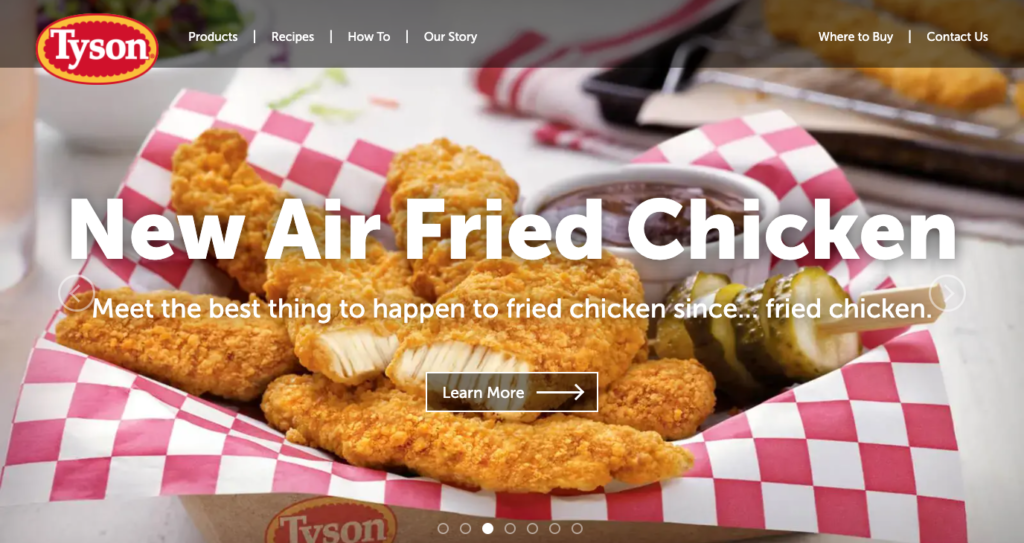
NOTE: Apple narrowly escaped this category. At the time of our website reviews they had gone to a site dedicated exclusively to pushing the new iPhone SE. As of this writing however, they switched over to a more robust homepage with messaging and content around COVID-19.
1-Rating: Basic Notification
This is the bare minimum for brand communication as it takes almost no time or effort to activate a notification and link to a statement.
There is an argument that a mostly generic statement does little to enhance a brand’s image, but at least it shows awareness.
The important thing to keep in mind with this approach is that even with a notification added, the rest of the homepage content still needs review to avoid feeling out of sync.
Examples:
Costco has an opportunity to use their giant homepage carousel for a statement about their actions during the crisis rather than simply promoting sales. In addition, they could put a hold on promoting products that aren’t usable during the lockdown.

Also, if a brand does go with a basic notification and states that it’s “important”, it needs better placement (and spell checking) than the bottom corner of the site as shown with Plains All American Pipeline.
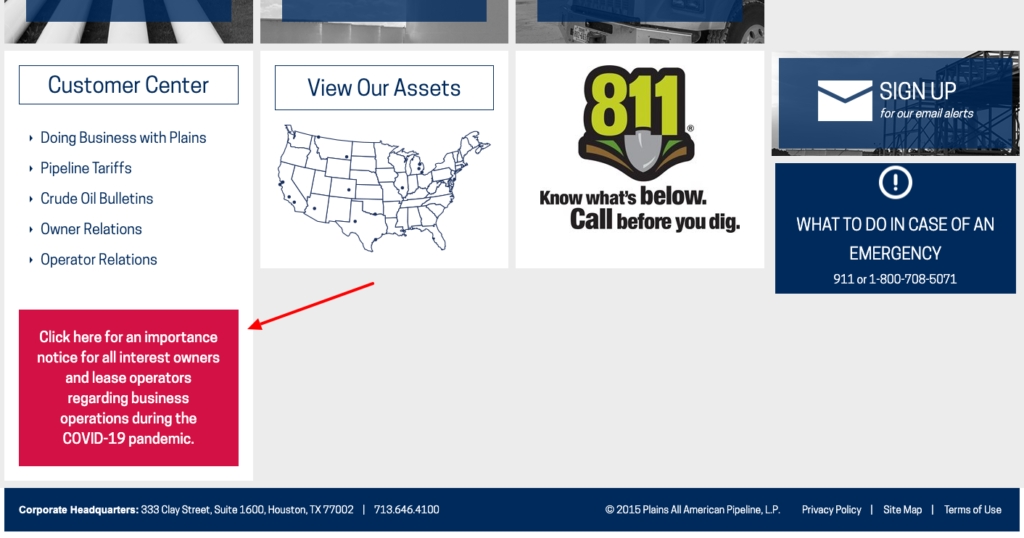
2-Rating: Action and Empathy Message
This was the most common messaging option with 35% of brands opting for this approach.
From a technical standpoint, it’s not much more complex than a simple notification bar. But from a brand perspective, it puts more obvious emphasis on the message.
Content adjustments like this give the brand an opportunity to connect with customers and put any efforts they’ve made front and center.
Examples:
State Farm, along with other major car insurance providers, have quickly developed initiatives to provide refunds on policies while driving is limited.
This is a great example of overriding the normally scheduled homepage content for a specific message. It conveys critical customer information and boosts the brand through clear, helpful messaging.
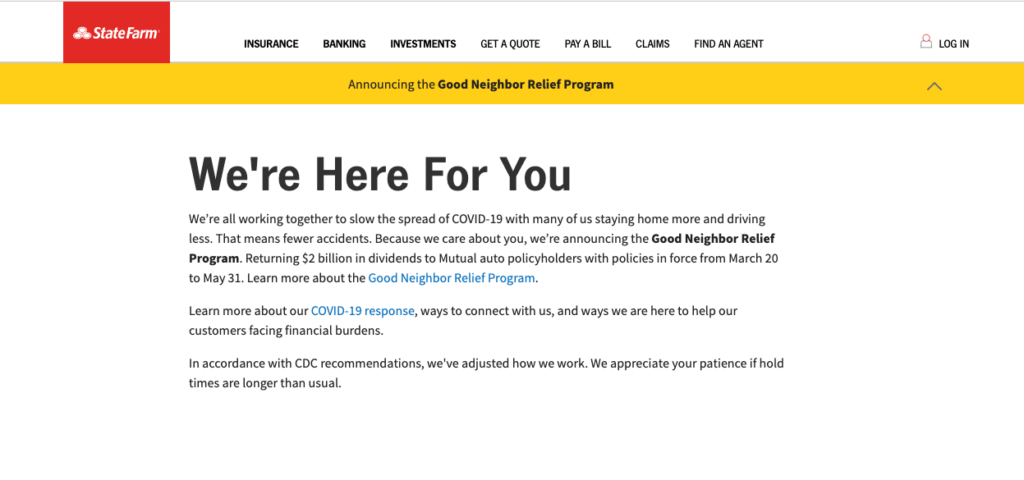
HP shows another creative initiative by gathering support for Folding@Home an organization that taps into people’s unused computer processing capabilities to contribute to disease research — in this case, COVID-19.
This is a perfect example of a relevant brand partnership that engages customers to use their HP products in a novel and beneficial way.
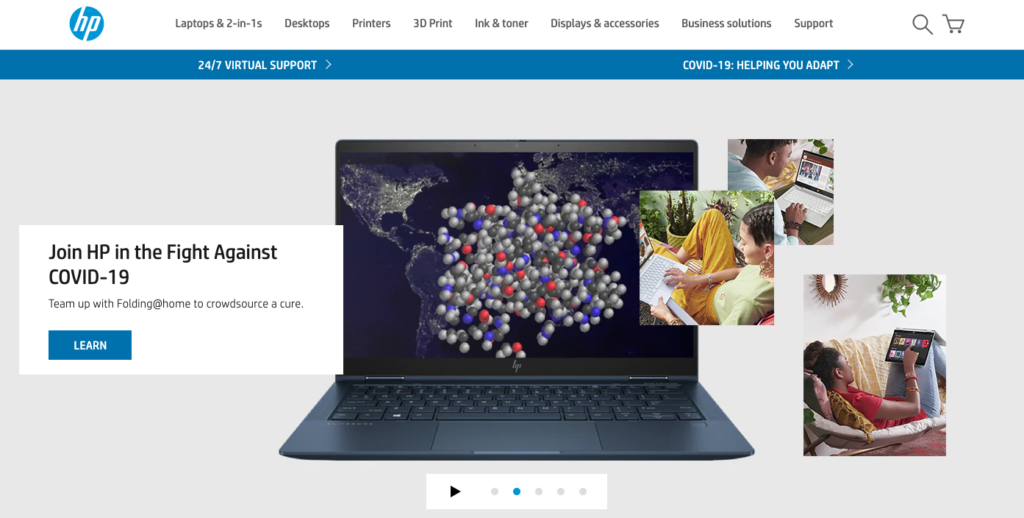
3-Rating: Messaging and Custom Content
This rating was for brands that have gone beyond basic messaging and truly altered their homepage content to speak to the COVID-19 crisis.
25% of the Fortune 100 brands have gone this route.
These companies have invested significant time and energy not just to promote corporate actions but provide extra value for their customers.
Efforts like this can go a long way to creating deeper brand loyalty with customers at a time when needs are high.
And as we’ll see with these examples, there are several creative ways for brands to engage through an approach like this.
Examples:
“What we’re doing”
General Motors’ COVID-19 content largely centers around their efforts to repurpose manufacturing resources to create critical, life-saving medical equipment.
It’s a powerful example of what a massive organization can accomplish in a short period of time.
This is a message that deserves focus and can make GM customers feel proud about their association with the brand.
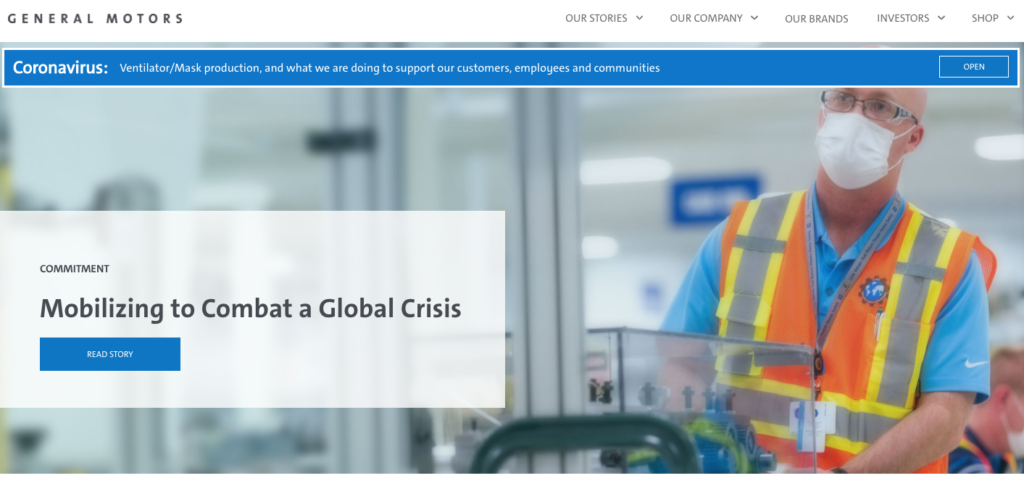
“How we can help keep you informed”
A big part of Johnson and Johnson’s new content centers around education. The centerpiece being a new YouTube series focused on finding a vaccine for COVID-19.
At a time when we’re all trying to stay informed and when misinformation can spread quickly, putting out intelligent, thoughtful content like this can be extremely valuable.
It’s a perfect expression for a brand in the medical product space that’s seeking to make an impact and build trust.

“How we can help you”
One last approach comes from Lowe’s, which has updated their homepage to focus on helpful content for their customers.
At a time when we’re all stuck at home, this is an obvious opportunity for a brand that centers on home improvement.
But they do a great job of moving beyond the theme of improvement projects. In-depth sections like DIY projects to entertain cooped up kids can provide much needed relief for stressed families.
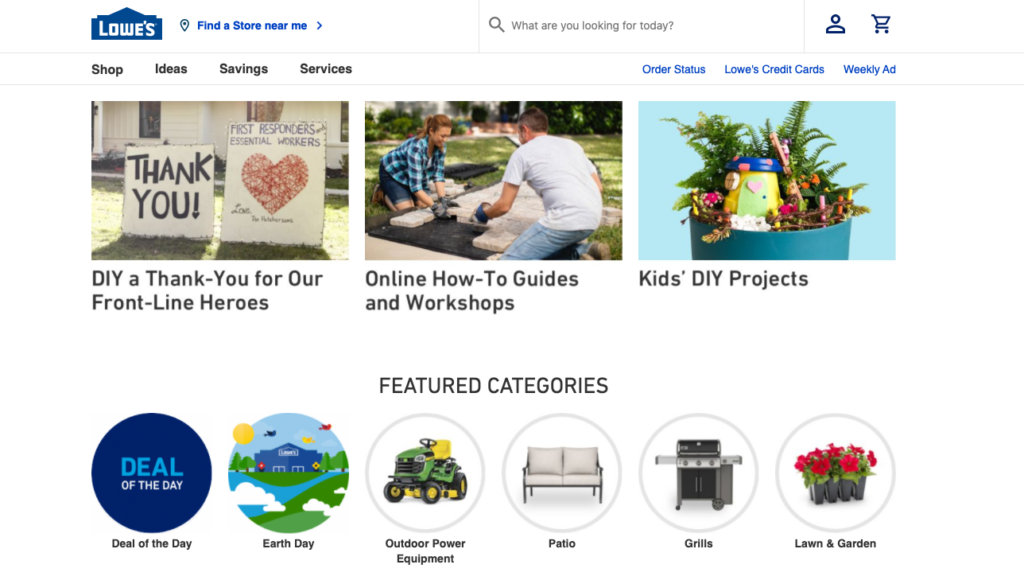
Takeaways For Your Brand Messaging
Despite Fortune 100 companies having plenty of resources, it’s clear there’s no singular approach for how they’re responding to this crisis.
But while business models and website audiences may vary drastically, it’s hard not to feel like every brand should say something.
A brand is a relationship between the business and its customers. And no matter what business you’re in, everyone is being impacted by this crisis.
Saying nothing creates a disconnect from the reality we’re all facing.
As we all continue to figure out what to say and do, there are a few ideas we can extract from these examples:
- New customers didn’t see last week’s email: Even if you’ve shared messages on the crisis via email, people discovering or checking in on your brand today won’t know what you’ve said previously. Your website homepage is a central hub to communicate a consistent message with new and existing customers.
- Show that you’re connected: Businesses don’t need massive resources to put out a message of support or to tweak their messaging slightly. Even a small acknowledgement is an indicator that there are real people at work behind your business.
- Share what you’ve done: If your brand has contributed to this effort even in a small way, share that message. This is a time for the greater community to support one another. Sharing these actions helps normalize and encourage the kind of behavior we all need.
- Get creative with content: Look for opportunities to use your existing offerings or content in ways that could be useful for people right now. Is there a new way to position your value specific to the challenges of this moment?
While this study focused on big organizations, these ideas don’t require endless resources to implement.
This is a unique moment in time, so it’s understandable that it’s taking a while for brands to find their footing. But hopefully, by looking at our collective efforts we can keep finding ways to support and inspire action and help us all come out stronger on the other side.
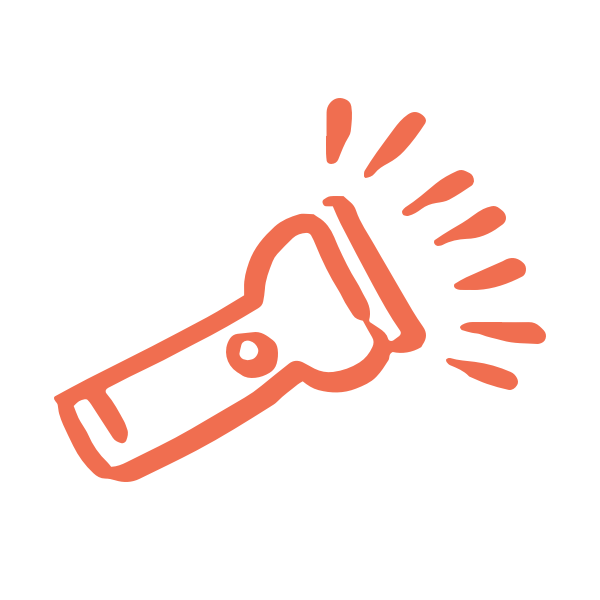
Get Immediate Strategic Support For Your Brand, Marketing, or Business
As we all deal with the wide variety of challenges facing our businesses and brands, we’re offering immediate, remote help. Click below to book a free 30 minute video strategy session.

